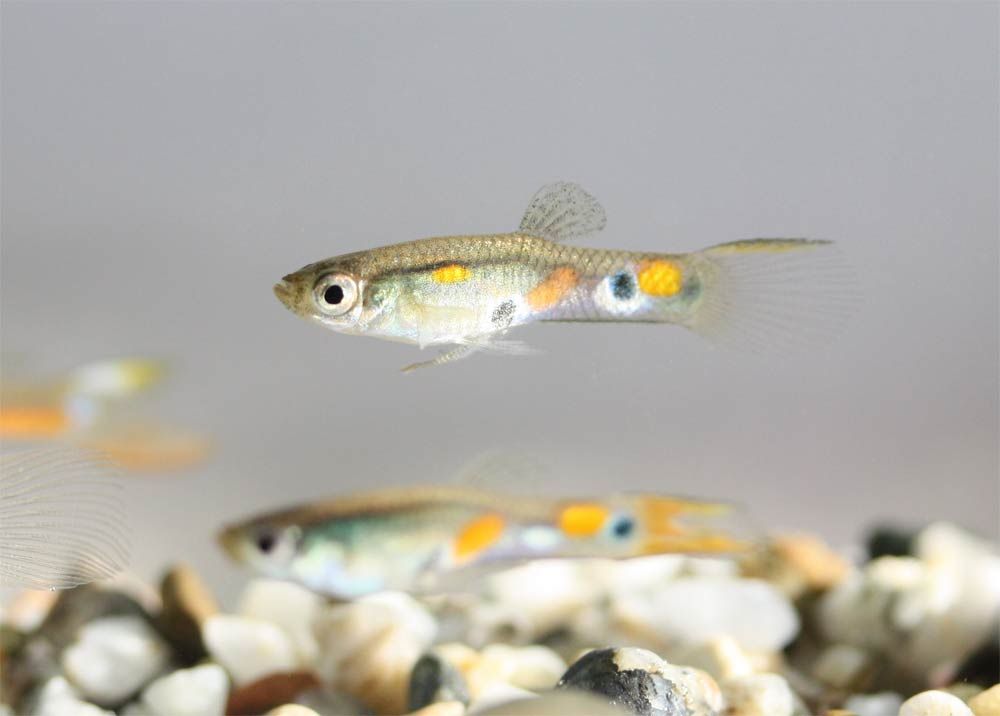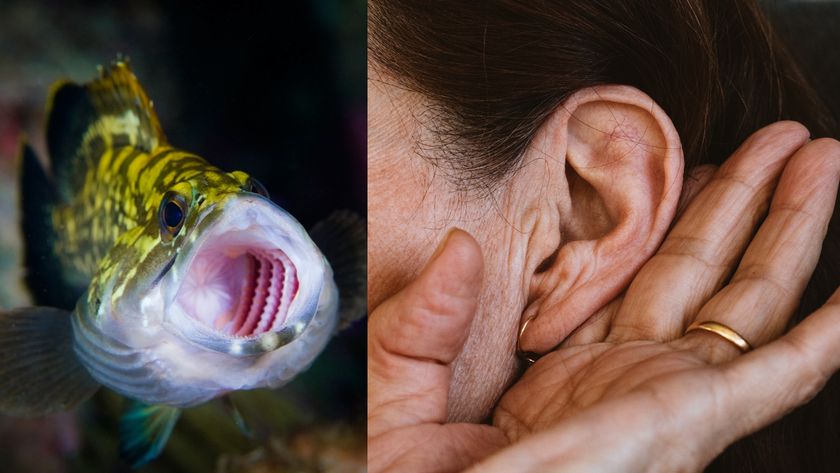Getting to the Bottom of Why Guppies Jump

When a guppy jumped out of a laboratory tank and nearly landed in her cup of tea, Daphne Soares couldn’t resist putting her current research on hold to investigate this strange leaping behavior.
"The guppy jumped from its holding tank next to my computer," Soares, an assistant professor in the department of biology at the University of Maryland in College Park, told LiveScience. "Why do they do this? It was one of those things that we were just too curious about, so we had to look into it."
Soares and her colleagues used high-speed cameras to film a group of nine male guppies from the island of Trinidad. Their research, published online April 16 in the journal PLOS ONE, suggests wild guppies use their curious jumping ability as a way to spread the species away from an original habitat, to a new place with fewer predators. In other words, jumping likely serves a crucial evolutionary function for guppies.
"It's like how dandelions spread their seeds all over — original populations give rise to secondary populations," Soares explained. "When guppies jump, we think it has to do with this idea of biological dispersal, which refers to a species moving away from an existing population to try to colonize another patch of habitat." [10 Amazing Facts About Animals]
Guppies are known to be jumpy fish, but unlike other species (such as archer fish or sockeye salmon), they do not seem to leap out of the water to catch prey, escape from predators or overcome physical barriers during seasonal migrations.
"They just have this urge to jump," Soares said. "They don't do it out of panic, or because they're anxious about their environment. When we monitored them, they jumped when they were quiet and relaxed. Most fishes jump when they're startled, so either for migration or to avoid predators. But with guppies, it was a controlled situation when they performed this behavior."
In studying their high-speed video of leaping guppies, the researchers observed that the fish go through a short process to prepare for their jumps.
Sign up for the Live Science daily newsletter now
Get the world’s most fascinating discoveries delivered straight to your inbox.
"I don't want to anthropomorphize too much, but it's almost like they have a plan," Soares said. "They stop, then use just their lateral fins to move a bit backwards, then they change direction, and when they take off from the water, they keep moving their bodies back and forth."
The scientists were also curious how far the fish could fling themselves out of the water. In some of their observed cases, guppies were able to launch themselves to heights eight times their body length, at speeds of more than 4 feet per second (1.2 meters per second).
The researchers used wild guppies for their study, so what triggers pet guppies to jump remains a bit of a mystery.
"Domesticated guppies probably maintain some of their ancestral behaviors, but I don't really know," Soares said.
And as for the guppy that nearly jumped into Soares' tea?
"Fortunately it was iced chai and it had a lid on, so he stayed alive," she said.
Follow Denise Chow on Twitter @denisechow. Follow LiveScience @livescience, Facebook & Google+. Original article on LiveScience.com.

Denise Chow was the assistant managing editor at Live Science before moving to NBC News as a science reporter, where she focuses on general science and climate change. Before joining the Live Science team in 2013, she spent two years as a staff writer for Space.com, writing about rocket launches and covering NASA's final three space shuttle missions. A Canadian transplant, Denise has a bachelor's degree from the University of Toronto, and a master's degree in journalism from New York University.











